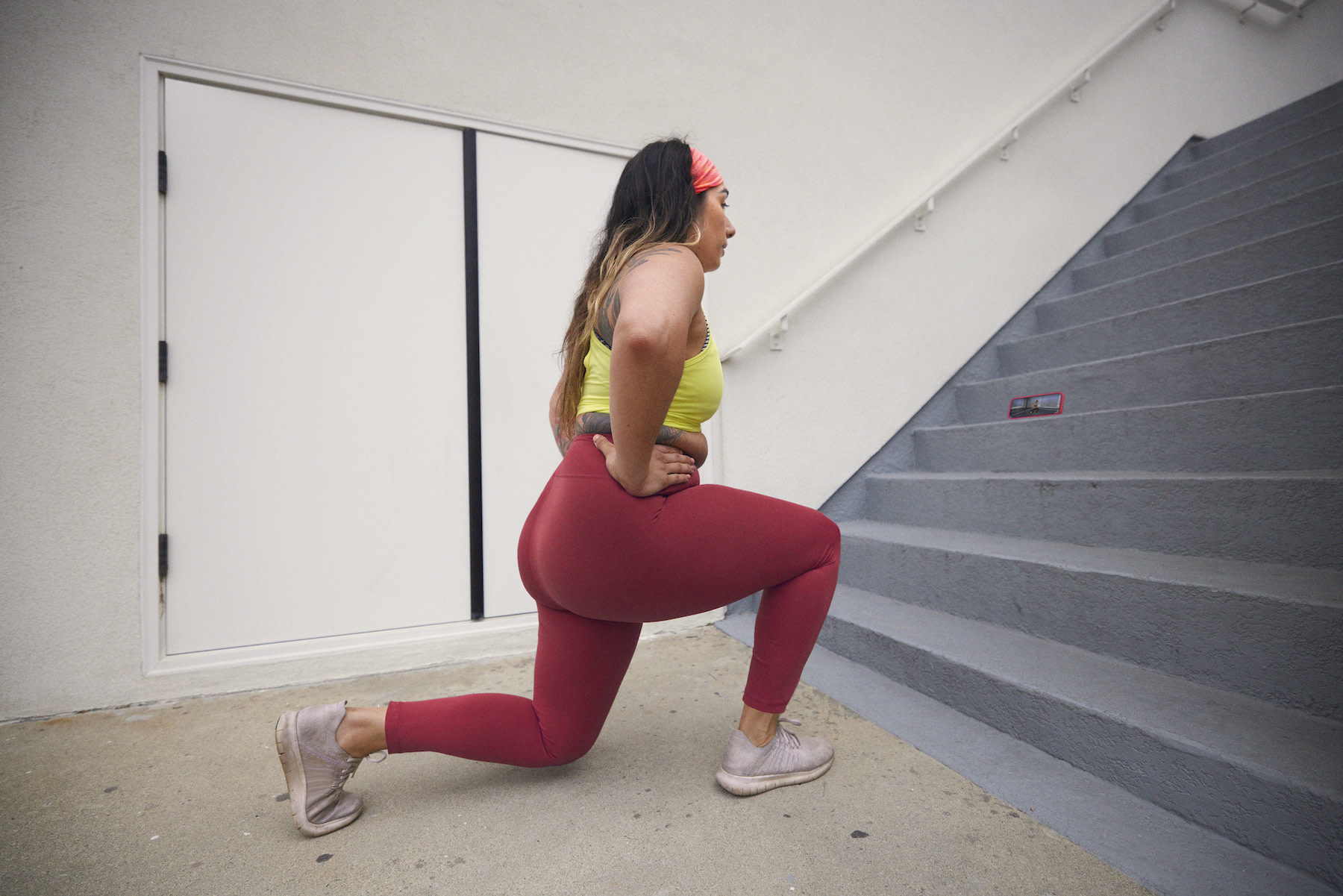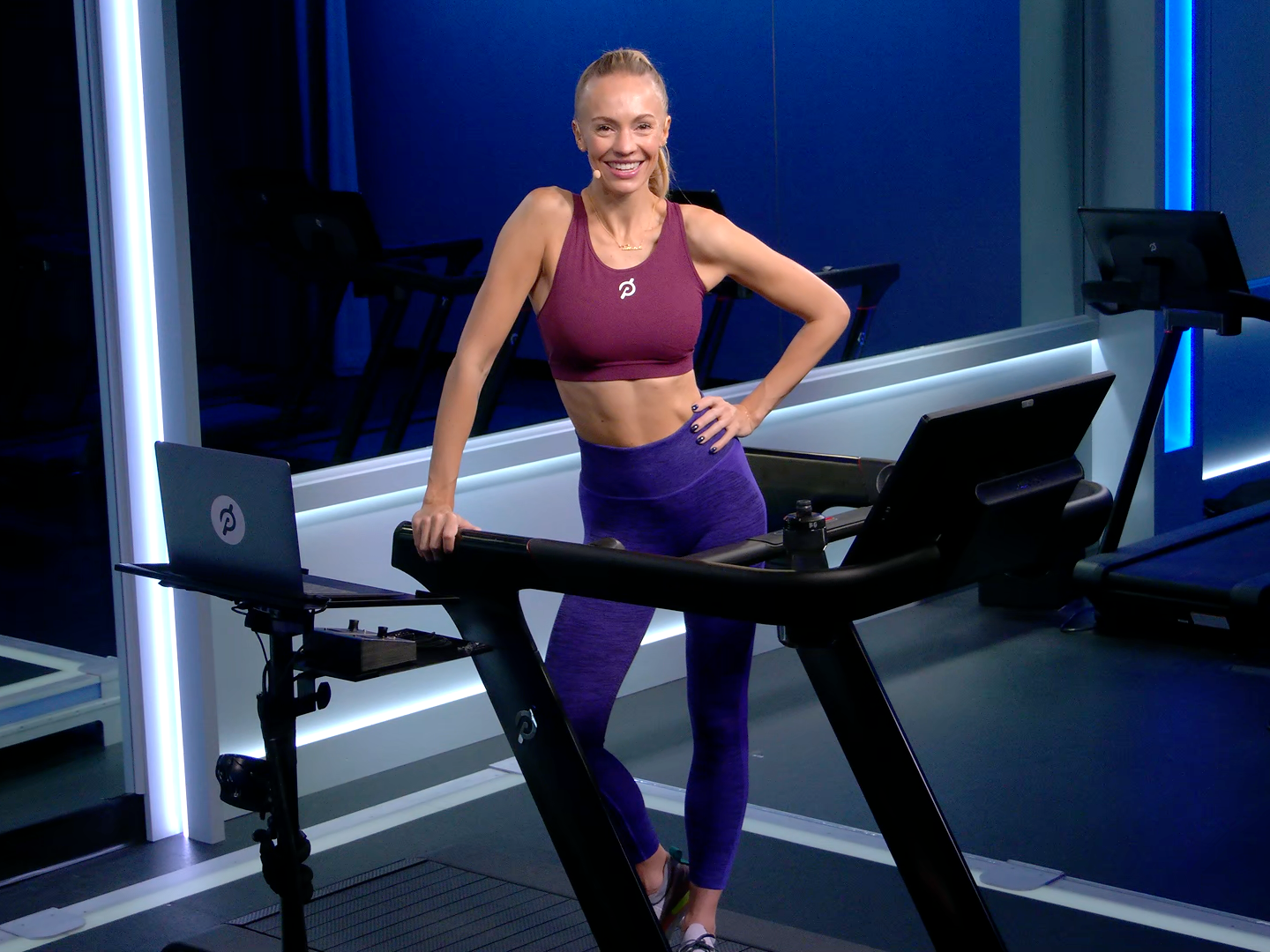
Exactly Why Strength Training Is Critical for Runners and the Moves You Need To Try
Just a few sessions a week can have long-lasting benefits when it comes to improving your stride.
By Colleen Travers, Team Peloton•
The Benefits of Strength Training for Runners
How to Strength Train for Runners
How Often Should Runners Strength Train?
Should You Run or Lift First?
Best Strength Training Exercises for Runners
Peloton Strength Training Programs for Runners
If you’re a runner who craves a fast and sweaty workout, you may be skipping some strength training sessions in favor of logging more miles on the road or treadmill instead. But strength training for running is actually is crucial, as it’ll increase your endurance, prevent injury, and encourage recovery. Peloton Tread instructor Becs Gentry explains all about what kind of strength training you should be doing, plus exactly how often runners should strength train.
The Benefits of Strength Training for Runners
If you’re looking to take things to a new level, learning how to balance running and lifting could be a game changer. Boasting some serious benefits both to your fitness and recovery, strength training can boost your endurance and speed by helping you run stronger.
Strength Training Helps Prevent Injuries
Going from couch to cardio has its risks for injury—even for super active people. Why? With the way our lifestyles are now, we’re sitting for long periods of time throughout the day—especially if you work on a computer. Over time, this creates a weakness in the backside muscles of your body, and when coupled with contracted front muscles from extended periods of sitting, can lead to a lack of strength in the core and hips. Running needs core strength to power the body safely and efficiently through every stride, and also needs strength and mobility in the connective tissues.
Strength training focuses on the core, helping to build and reinforce connective muscles and train for balance and stability. Studies have shown strength training can actually reduce the risk of a sports injury by a third and the risk of repetitive strain injuries by almost one half.

Strength Training Improves Your V02 Max Over Time
Improving your V02 max—the maximum rate of oxygen your body uses during exercise—through your workouts is key to all fitness activities and can be beneficial to your overall health. A training program that combines strength training with cardio like running can help elevate your V02 max over time. And, the higher your V02 max, the better your body will use and convert that oxygen into energy, needed for both your running speed and endurance.
Strength Training Helps You Run Faster and Longer
Alongside your V02 max, strength training can also help improve your running economy—the amount of energy needed at a given speed, which indicates your energy efficiency. It does this by helping increase strength and coordination in your muscles, and how your body activates them during physical activities. By adding consistent strength training as part of your running program, your goal is to use less energy so you can run faster and for longer distances.
Strength Training Has Wider Health Benefits
Running aside, strength training offers far ranging benefits for your body, including improving cardiovascular health—blood pressure, diabetes, and heart disease, as well as improving glucose metabolism, helping strengthen your bones, and general fitness levels, mobility and agility.
How to Strength Train for Runners
Wondering how to balance running and lifting? “Research has shown that runners should incorporate strength training into their routine two to three times a week, focusing on those specific moves like single leg work that support the motion of running,” Becs says. Here are her key pointers on how to get the most out of strength training for runners.
Train to Prevent Injury
It’s important to make sure your strength training includes injury prevention exercises, Becs shares. This is why a running-specific program is often more beneficial. “You have to strengthen muscles that directly affect cartilage and ligaments, and these are often smaller muscles that are overlooked in traditional strength training routines.”
Strength Train the Right Muscles
Of course you should make time for lower body strength exercises. “Stronger leg muscles can deliver more power when running,” Becs says. “Strengthening connective tissues like tendons and ligaments can make you less prone to overuse strain by minimizing stress of the bones, ligaments, tendons, or cartilage.”
Just don’t make the mistake of working only on your legs, as you’ll notice huge benefits when you pay attention to the rest of your muscles as well. “Improving your upper body will boost your efficiency by injecting more power into your stride, while strengthening your core will help minimize side-to-side movement when you run, helping you keep proper form as you start to get tired,” Becs says.
Pro tip: Make sure you’re hitting all the muscles that matter by taking a 10- or 20-minute Strength For Runners class.
Switch It Up
Variety isn’t just the spice of life—it’s also how you can keep your muscles from flatlining due to a stale strength training routine (i.e. doing the same set of exercises over and over). “Runners should roll through one upper body, one lower body and one total body training session per week,” Becs says.

Focus on Unilateral Strength Training
Making sure you’re keeping your workouts varied will also lead you to do more unilateral strength training. This is where you focus on single arm or leg movements, as opposed to using both sides of the body at the same time. Unilateral training is particularly effective for runners because running is a unilateral sport (only one leg hits the ground at a time). Becs says exercises like one-legged squats, lunges, step-ups and single-arm rows isolate certain areas of the body, which can help make muscles stronger and more balanced.
Unilateral exercises can be tricky to master at first, so you may need to build a base by starting with a 5-minute Strength Skills class or a beginner Full Body Strength routine to make sure you’re practicing proper technique before working one side at a time.
Stretching Is Important for Training Too
In addition to strength training, Becs recommends active isolated stretching after a run (as opposed to dynamic stretching you’d do pre-run). That will work the muscle-tendon zones of the body and help you avoid muscle strains. You can find these types of exercises in a Peloton 5- or 10-minute post-run stretch class.
How Often Should Runners Strength Train?
“Runners should incorporate strength training into their routine two to three times a week, focusing on those specific moves like single leg work that support the motion of running,” says Becs. Make sure to include stretching and foam rollers as part of your recovery time too.
If you stick to this routine, Becs says, you should notice considerate improvement after about six weeks.
Should You Run or Lift First?
This really depends on what you’re looking to achieve from your workouts. If you want to build your running speed and endurance and prevent injury, then starting with your strength training and running after is the way to go. If you’re looking to build muscle, run first and strength train after. Or, you can simply do your training on different days. Choosing the right program for your goals will help guide you too.
Best Strength Training Exercises for Runners
Get started on your strength training with these examples of exercises you can do at home or as part of a strength training program.
Plyo Lunges
These types of lunges help condition the muscles to contract more quickly and forcefully, improving muscular power and elasticity.
Dead Bugs
Extending the opposite arm and leg activates the ‘sling effect’, which is the exact motion of running, helping to train you for your most efficient run.
Single-Leg Deadlifts
This type of deadlift targets hamstring strength which is used for power in speed and on hills. It also trains balance as we are always on one leg when we run.
Hip CARs
These are great for improving mobility, stability, and overall joint health. As runners, maintaining healthy hip joints is very important.
Side Planks
Planks help stabilize the core—including the hips, which helps prevent excessive twisting and injuries to the hip and IT band.
Renegade Rows
A strong upper back helps with runners’ arm drive power, which in turn helps you feel more efficient and fluid if your legs start to lag.
Peloton Strength Training Programs for Runners
Following one of our running-specific strength training Programs—designed by Peloton instructors, will ensure you’re doing the right kinds of strength training to support your running.
Each of our Programs are a series of exclusive classes set in a specific order, created to help you set your goals and track your progress. These include:
Beginner Strength: Join Matty Maggiacomo and Olivia Amato for this six-week progressive Beginner Strength Program. They will guide you every step of the way as you learn proper form and how to speak strength.
Total Strength: a 4-week, progressive strength program with Andy Speer that will teach you proper movement and form.
Straight to the Core: Join Rebecca Kennedy for this 4-week program to build core strength and power using progressive overload training. Class durations and technical difficulty increases as weeks progress.
The Stronger You: Ben Aldis shows how to learn the correct form and key movements as your body is challenged in this 4-week strength building program.
Train Like Usain Bolt: Train like the world’s fastest man, Usain Bolt. In his program you’ll zip through sliders, build your core, and sink into stretches—all to Usain’s top dancehall and reggae tunes.
Trying to become a faster runner? These Tread workouts will help you crush your speed goals.